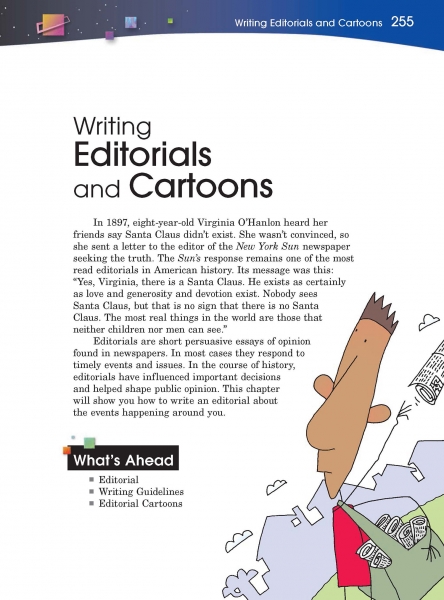Page 255 from

Start-Up Activity
Bring to class an interesting editorial from your local newspaper. Read it aloud, or distribute copies for students to read silently. Afterward, ask students whether or not they agree with the writer and why. Ask what the writer's strongest reason is, and what parts might not be as convincing.
Then let your students know they are about to become editorial writers themselves. And some of them may become editorial cartoonists. (See the quotation below.)
Think About It
“An illustration is a visual editorial—it's just as nuanced. Everything that goes into it is a call you make: every color, every line weight, every angle.”
—Charles M. Blow

Start-Up Activity
Bring to class an interesting editorial from your local newspaper. Read it aloud, or distribute copies for students to read silently. Afterward, ask students whether or not they agree with the writer and why. Ask what the writer's strongest reason is, and what parts might not be as convincing.
Then let your students know they are about to become editorial writers themselves. And some of them may become editorial cartoonists. (See the quotation below.)
Think About It
“An illustration is a visual editorial—it's just as nuanced. Everything that goes into it is a call you make: every color, every line weight, every angle.”
—Charles M. Blow